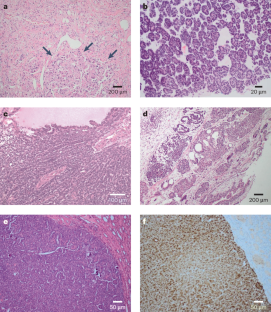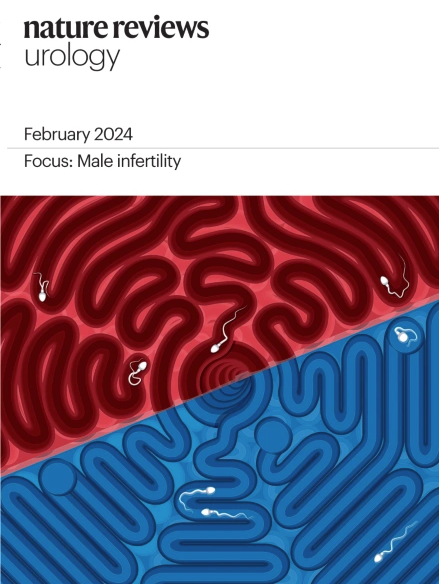Renal mass biopsy — a practical and clinicopathologically relevant approach to diagnosis
IF 12.1
1区 医学
Q1 UROLOGY & NEPHROLOGY
引用次数: 0
Abstract
Advancements in imaging modalities have increased the frequency of renal mass discovery. Imaging has typically been considered sufficient to guide management for a large proportion of these tumours, but renal mass biopsies (RMBs) have an increasing role in determining malignancy and can be a valuable tool for preventing unnecessary surgery in patients with benign tumours. A structured approach should be used to help to navigate the expanding repertoire of renal tumours, many of which are molecularly defined. In terms of tumour subtyping, the pathologist’s strategy should focus on stratifying patients into clinically different prognostic groups according to our current knowledge of tumour behaviour, including benign, low-grade or indolent, intermediate malignant or highly aggressive. Crucial pathological features and morphological mimicry of tumours can alter the tumour’s prognostic group. Thus, pathologists and urologists can use RMB to select patients with tumours at a reduced risk of progression, which can be safely managed with active surveillance within a tailored imaging schedule, versus tumours for which ablation or surgical intervention is indicated. RMB is also crucial in the oncological setting to distinguish between different high-grade tumours and guide tailored management strategies. In this Review, the authors discuss advantages and complications associated with renal mass biopsy and provide an overview of different features of both well-recognized types of renal cell carcinoma and newly identified subtypes to improve diagnosis and management.


肾肿块活检--一种实用且与临床病理相关的诊断方法。
成像模式的进步增加了肾肿块的发现频率。影像学通常被认为足以指导大部分此类肿瘤的治疗,但肾肿块活检(RMBs)在确定恶性程度方面发挥着越来越重要的作用,是避免良性肿瘤患者接受不必要手术的重要工具。应采用一种结构化的方法来帮助了解不断扩大的肾肿瘤种类,其中许多肿瘤都有分子定义。就肿瘤亚型而言,病理学家的策略应侧重于根据我们目前对肿瘤行为的了解,将患者分为临床上不同的预后组别,包括良性、低度或轻度、中度恶性或高度侵袭性。肿瘤的关键病理特征和形态学模拟可改变肿瘤的预后分组。因此,病理学家和泌尿科医生可以利用红外线成像技术来选择肿瘤进展风险较低的患者,这些患者可以通过量身定制的成像计划进行积极的监测,从而安全地控制肿瘤的进展。在肿瘤学领域,红外线成像对于区分不同的高级别肿瘤和指导量身定制的管理策略也至关重要。
本文章由计算机程序翻译,如有差异,请以英文原文为准。
求助全文
约1分钟内获得全文
求助全文
来源期刊

Nature Reviews Urology
医学-泌尿学与肾脏学
CiteScore
12.50
自引率
2.60%
发文量
123
审稿时长
6-12 weeks
期刊介绍:
Nature Reviews Urology is part of the Nature Reviews portfolio of journals.Nature Reviews' basic, translational and clinical content is written by internationally renowned basic and clinical academics and researchers. This journal targeted readers in the biological and medical sciences, from the postgraduate level upwards, aiming to be accessible to professionals in any biological or medical discipline.
The journal features authoritative In-depth Reviews providing up-to-date information on topics within a field's history and development. Perspectives, News & Views articles, and the Research Highlights section offer topical discussions and opinions, filtering primary research from various medical journals.
Covering a wide range of subjects, including andrology, urologic oncology, and imaging, Nature Reviews provides valuable insights for practitioners, researchers, and academics within urology and related fields.
 求助内容:
求助内容: 应助结果提醒方式:
应助结果提醒方式:


